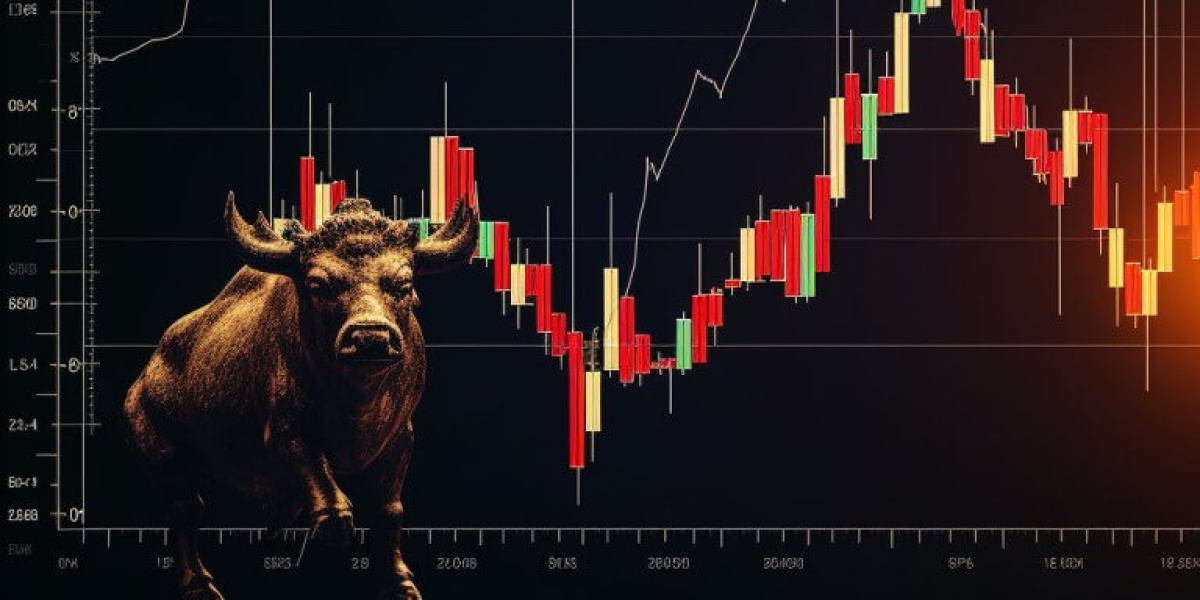These traps can be the difference between success and substantial losses in the financial markets. This article will cut through the complexity and shed light on these phenomena, offering strategies to navigate these treacherous waters effectively.
Why Recognizing Bull and Bear Traps Matters
Understanding the basics of bull traps and bear traps is not merely an option for traders and investors; it’s a fundamental requirement. These traps are lurking hazards that can ambush the unprepared and unsuspecting.
Recognizing them can make or break your financial endeavors. In the following sections, we will delve into the specifics of bull traps and bear traps, their telltale signs, and strategies to stay ahead of the game.
Understanding Bull Traps
A bull trap is a deceptive market phenomenon that can wreak havoc on the portfolios of unsuspecting traders and investors. It’s a false signal, a mirage of a trend reversal, leading market participants to make erroneous decisions.
Defining a Bull Trap
At its core, a bull trap is a cunning market maneuver where the price of an asset, amidst a prolonged decline or within a prevailing downtrend, experiences a sudden and enticing surge. This upward price movement can be deceptively convincing, leading traders to believe that a trend reversal from bearish to bullish is underway. As a result, they eagerly start buying the asset, expecting the price to continue its ascent.
The Anatomy of a Bull Trap
A bull trap typically unfolds during a downtrend, a scenario where the price of an asset has been steadily declining. Just when traders are gripped by pessimism and are inclined to short-sell or avoid buying, a glimmer of hope appears. The price suddenly starts to rise, displaying all the signs of a bullish reversal.
A Real-World Example of a Bull Trap
Consider the stock market crash of 1929, which triggered the Great Depression. In the midst of a severe and prolonged bear market, there were instances when certain stocks experienced brief, sharp price increases. These price surges enticed traders into believing that the worst was over, and they eagerly bought stocks, only to witness further catastrophic declines.
Factors Behind Bull Trap Formation
Bull traps are not random occurrences; they have distinct triggers:
Market Manipulation: Large institutional traders, often referred to as “whales,” have the power to move markets. They can strategically place large orders to create the illusion of a trend reversal, luring in smaller traders.
News Events: Sudden and unexpected news or global events can induce sharp price movements. These movements may be temporary and lead to the formation of traps.
Psychological Factors: The fear of missing out (FOMO) is a potent psychological force in trading. Traders, fearing that they’ll miss out on potential gains, may hastily jump into trends without conducting proper analysis, setting the stage for bull traps.
Understanding these underlying factors that contribute to bull trap formation is crucial for traders seeking to protect themselves from these market snares. It’s the first step toward informed decision-making and risk mitigation in the ever-fluctuating financial markets.
Understanding Bear Traps
A bear trap, the cunning counterpart to a bull trap, is a deceptive market scenario that can confound traders and investors. It unfolds as a false signal of a trend reversal within a prevailing uptrend, luring market participants into potentially damaging actions.
Defining a Bear Trap
In essence, a bear trap is a clever market ploy characterized by a sudden, but temporary, decline in the price of an asset that has been enjoying an extended uptrend. This decline creates the illusion of a reversal from a bullish to a bearish trend, tricking traders into making misguided decisions.
The Dynamics of a Bear Trap
A bear trap typically emerges during an uptrend, a scenario where the price of an asset has been steadily rising. Just when traders are brimming with optimism and contemplating further buying, the market throws a curveball. The price takes an unexpected dive, displaying all the hallmarks of a bearish reversal.
A Real-World Example of a Bear Trap
During the dot-com bubble of the late 1990s, many internet-related stocks were experiencing astronomical rises. Investors, convinced that the boom would continue indefinitely, poured their money into these stocks.
However, a sudden downturn in the Nasdaq Composite Index, driven by bursting the dot-com bubble, led to massive losses for those who had fallen into the bear trap. The initial decline was a trap that was followed by a substantial recovery.
Factors Behind Bear Trap Formation
Understanding the factors that contribute to bear trap formation is essential for traders seeking to avoid these market pitfalls:
Market Manipulation: Large institutional traders can exert substantial influence over markets. They may employ tactics such as short selling to artificially lower prices, luring in smaller traders.
News Events: Unexpected and significant news events can trigger sharp price declines. These declines may be temporary and create the conditions for bear traps to emerge.
Psychological Factors: Market psychology often plays a pivotal role. Traders may succumb to fear when they see an asset’s price suddenly drop, selling their holdings hastily, which can lead to bear traps.
Recognizing the underlying factors and dynamics of bear trap formation is the first step towards mitigating the risks associated with these treacherous market situations. It empowers traders to make more informed decisions and navigate the volatile world of finance with greater confidence.
How to Identify Bull Traps and Bear Traps
Traders and investors navigate the financial markets armed with a variety of tools and indicators to help them distinguish between genuine trends and deceptive traps.
The ability to identify bull traps and bear traps is a valuable skill in the world of trading and investment. These traps can lead to significant financial losses if not recognized and managed effectively. By keeping a watchful eye on the signs and indicators mentioned below and practicing prudent analysis, traders can enhance their ability to avoid these market pitfalls and make more informed decisions.
Identifying Bull Traps
False Breakouts: One of the primary indicators of a bull trap is a false breakout. This occurs when the price of an asset breaks above a resistance level, only to swiftly reverse and fall back below it. Traders who mistake this initial upward move for a true trend reversal can find themselves trapped.
Low Volume: Pay close attention to trading volume during an apparent uptrend. A bull trap often unfolds with weak buying interest, indicated by low trading volumes. This suggests that the upward move may lack the necessary market support to sustain itself.
Overbought Indicators: Utilize technical indicators like the Relative Strength Index (RSI) to gauge the momentum of an asset. An RSI showing overbought conditions during the initial breakout can be a warning sign of a potential bull trap. Overbought conditions imply that the asset may be due for a price correction.
Identifying Bear Traps
False Breakdowns: A bear trap often begins with a false breakdown. This deceptive move occurs when the price of an asset breaks below a support level but swiftly reverses and rises again. Traders who short the asset, expecting a continued decline, can be ensnared by this sudden turnaround.
Low Volume on Decline: Similar to bull traps, low trading volume during the price decline is a red flag for potential bear traps. A lack of strong selling interest suggests that the asset’s apparent downtrend may not be supported by a broad market consensus.
Oversold Indicators: Monitor technical indicators like the RSI for oversold conditions during the initial price drop. An RSI signaling oversold conditions can be an indicator of a potential bear trap. Oversold conditions may imply that the asset’s price has been pushed down to an unsustainable level.
The Importance of Analysis and Due Diligence
Recognizing bull and bear traps requires meticulous analysis and due diligence. Traders and investors must refrain from hasty decisions driven by fear, greed, or impatience. Instead, they should patiently await confirmation of a trend before making significant moves. Relying on multiple indicators, backtesting strategies, and staying informed about market news and events are essential practices for navigating the complex terrain of financial markets.
Strategies to Avoid Falling into Traps
Traders and investors face the constant challenge of distinguishing genuine market trends from deceptive traps. Falling into bull and bear traps can result in significant financial losses.
To steer clear of these pitfalls and navigate the markets more effectively, consider the following practical strategies:
Wait for Confirmation
Before making any significant trading decisions, it is crucial to exercise patience and wait for confirmation.
This means refraining from impulsively entering a position based on a single price movement. Instead, wait for the trend to validate itself, such as by testing a newly established support or resistance level.
Use Multiple Technical Indicators
Relying on a single technical indicator can be risky. To enhance the accuracy of your analysis, consider using multiple technical indicators in conjunction.
These indicators should complement one another, providing a more comprehensive view of market conditions and reducing the likelihood of misinterpretation.
Implement Stop-Loss Orders
Stop-loss orders act as a safety net to protect against significant losses. By setting a predetermined price level at which your position will be automatically sold, you can limit potential losses.
This disciplined approach ensures that you exit a trade if the market moves against your position, preventing further financial harm.
Stay Informed about Market News
Market dynamics are often influenced by news and events. Staying informed about relevant news and developments can provide valuable context for price movements.
Regularly follow financial news sources to remain up-to-date with the latest information that may impact your trading decisions.
Resist the Fear of Missing Out (FOMO)
The fear of missing out (FOMO) can lead traders to make impulsive and irrational decisions. It’s crucial to stick to your trading strategy and not be swayed by the herd mentality. FOMO-driven trades are often fraught with risk, as they may lack a solid foundation of analysis.
Commit to Continuous Education
Markets are dynamic, and understanding market psychology is an ongoing process. Continuous education is key to honing your trading skills over time. Study market trends, technical analysis, and investor behavior to become a more informed and savvy trader.







